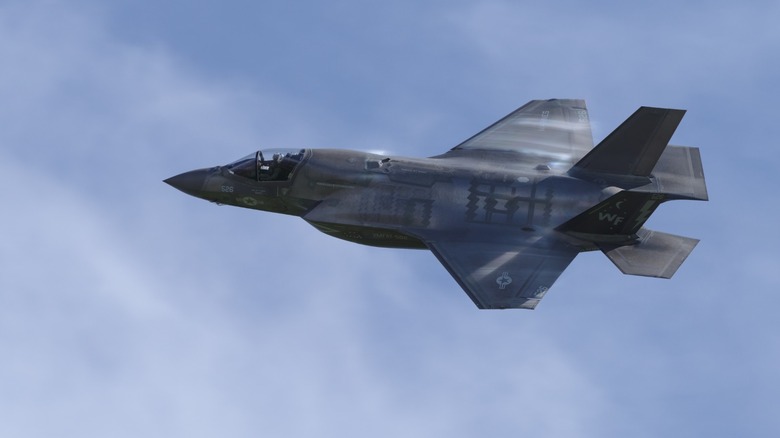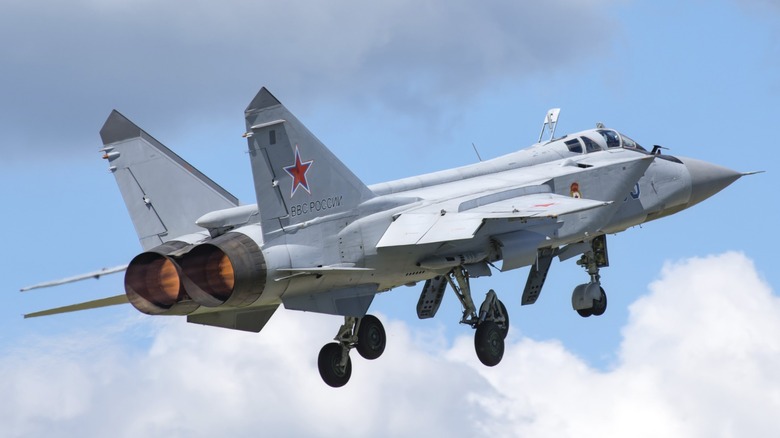F-35 Pilot Explains Why Fighter Jets Can't Turn At Fast Speeds
Most people consider speed to be the ultimate sign of a fighter jet's performance, but you'll be surprised to learn that the F-35, considered one of the most advanced jets in the world, is slower than some of the other fighters in the USAF inventory. For example, the F-16 Fighting Falcon has a top speed of Mach 2.0, allowing it to fly across the continental United States in an hour and 37 minutes, while the F-35 can only do it in around 2 hours and 4 minutes, with its lower top speed of Mach 1.6.
However, raw breakneck speed isn't the only metric of a fighter's combat capabilities. Militaries also have to consider its ability to see the enemy, the weapons it can carry, and survivability and maneuverability, among other things. So, even if you have one of the fastest fighter jets in the world, that doesn't automatically mean you'll best every other aircraft the enemy will send out against you.
This is confirmed by former F-35 combat fighter pilot Hasard Lee, who was previously the Chief of F-35 Training Systems. He said that any aircraft, even a missile, is G-limited, with most modern jets limited between 7.5 and 9 Gs. This means that the faster you go, the wider your aircraft will go. If you're in a turning battle with an adversary, going faster could make you overshoot your target and put you in its sights, turning you from predator to prey.
Speed isn't the only thing that counts
Speed is essential for fighter jets, especially as it will let them get into harm's way and disengage much faster. However, it's not the only thing that pilots consider when heading into combat. We see this trend with modern jets, which have lower top speeds than older fighters. For example, the MiG-25 Foxbat, which was introduced in 1970, can hit a maximum speed of Mach 3.2, making it one of the fastest Russian and Soviet fighter jets. On the other hand, NATO's fastest fighters only top out at Mach 2.5 with the Boeing F-15EX Eagle II.
Many other things come into play when it comes to modern air combat, with stealth increasingly becoming more important. After all, if the enemy cannot see your aircraft through radar, then they cannot shoot you down. Sensors are also crucial, as they would give pilots superior situational awareness, especially in the age of beyond visual range (BVR) warfare. Having an excellent sensor suite and advanced weapons that can take advantage of these technologies would allow them to engage the opponent before they get fired upon.
Even though the latest fighter jets have lower top speeds, that doesn't mean they're less powerful. In fact, the more important metric is thrust-to-weight ratio, which shows the power of the fighter's jet engine compared to its overall weight. While 3rd-gen aircraft have really high top speeds, most 4th- and 5th-generation aircraft have higher thrust-to-weight ratios, showing that they can accelerate just as hard, and maybe even have better maneuverability. The slower top speeds are a consequence of changing priorities, especially in airframe design. But that does not mean that the latest fighter jets are any less capable than the fastest aircraft from the '70s and '80s.

